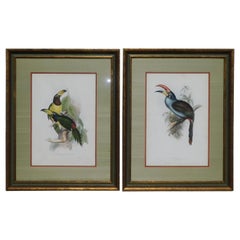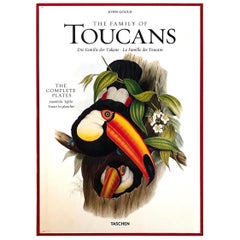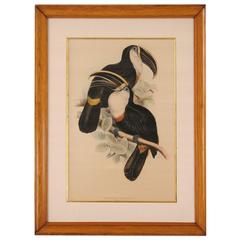John Gould Toucans
Antique 1840s English William IV Prints
Glass, Giltwood, Paper
Recent Sales
2010s American Victorian Prints
Paper
Antique 1850s English Prints
Paper
People Also Browsed
Vintage 1960s Norwegian Scandinavian Modern Dry Bars
Brass
Vintage 1970s American Chinoiserie Wall Mirrors
Brass
20th Century Norwegian Lounge Chairs
Leather, Wood
2010s American Renaissance Dining Room Tables
Walnut
Vintage 1960s Danish Mid-Century Modern Carts and Bar Carts
Teak
Vintage 1950s Swedish Scandinavian Modern Armchairs
Leather, Rosewood
2010s Beds and Bed Frames
Mahogany
Antique 18th Century French Classical Greek Prints
Giltwood, Paper
Vintage 1980s American Mid-Century Modern Wall Mirrors
Mirror
Vintage 1960s Danish Mid-Century Modern Carts and Bar Carts
Laminate, Teak
Antique Late 19th Century European Neoclassical Planters and Jardinieres
Iron
Vintage 1960s Danish Mid-Century Modern Sideboards
Wood
19th Century Animal Prints
Lithograph
Mid-20th Century Norwegian Mid-Century Modern Office Chairs and Desk Chairs
Leather, Palisander
Early 20th Century French Planters, Cachepots and Jardinières
Iron
Late 20th Century Other Prints
Glass, Wood, Paper
John Gould Toucans For Sale on 1stDibs
How Much are John Gould Toucans?
Finding the Right Prints for You
Prints are works of art produced in multiple editions. Though several copies of a specific artwork can exist, collectors consider antique and vintage prints originals when they have been manually created by the artist or are “impressions” that are part of the artist’s intent for the work.
Modern artists use a range of printmaking techniques to produce different types of prints such as relief, intaglio and planographic. Relief prints are created by cutting away a printing surface to leave only a design. Ink or paint is applied to the raised parts of the surface, and it is used to stamp or press the design onto paper or another surface. Relief prints include woodcuts, linocuts and engravings.
Intaglio prints are the opposite of relief prints in that they are incised into the printing surface. The artist cuts the design into a block, plate or other material and then coats it with ink before wiping off the surface and transferring the design to paper through tremendous pressure. Intaglio prints have plate marks showing the impression of the original block or plate as it was pressed onto the paper.
Artists create planographic prints by drawing a design on a stone or metal plate using a grease crayon. The plate is washed with water, then ink is spread over the plate and it adheres to the grease markings. The image is then stamped on paper to make prints.
All of these printmaking methods have an intricate process, although each can usually transfer only one color of ink. Artists use separate plates or blocks for multiple colors, and together these create one finished work of art.
Find prints ranging from the 18th- and 19th-century bird illustrations by J.C. Sepp to mid-century modern prints, as well as numerous other antique and vintage prints at 1stDibs. Browse the collection today and read about how to arrange wall art in your space.
Read More
Punk Rock and Rebellion Animate London’s Hit Yoshitomo Nara Show
The exhibition includes his portraits of wide-eyed kids with mayhem on their minds, as well as some of the artist’s personal belongings.
Whether Painted or Papered, Muraled Walls Make Bold Statements in the Home
The ancient practice of covering walls in artistic scenery is back.
In Francks Deceus’s ‘Mumbo Jumbo #5,’ the Black Experience Is . . . Complicated
Despite the obstacles, the piece’s protagonist navigates the chaos without losing his humanity.
12 Floral-Accented Rooms with a Handmade, Folkloric Feel
Who needs a flower garden? Just use your imagination — and some beautifully patterned wallpaper or fabric — to bring the outdoors in.
This Wolf Kahn Pastel Is the Epitome of Beauty at Its Most Essential
A longtime admirer of Kahn’s work, 1stDibs editorial director Anthony Barzilay Freund explores why it’s relevant now more than ever.
Why Jules Chéret Was the King of the Modern Poster
The streets of fin-de-siècle Paris were set aglow with colorful poster ads, thanks to the printing techniques invented by Jules Chéret. Now, the Milwaukee Art Museum is celebrating this undersung talent in America's first solo show dedicated his exuberant works.
Anna Condo’s Multifaceted Career Spans Film, Photography and NFTs
From her historic Manhattan townhouse, the talented creator and curator of 1stDibs' latest NFT exhibition tells us about the art in her home and how she got involved with cryptoart.
How Keith Rivers Went from NFL Linebacker to Blue-Chip Art Aficionado
The former football player is as serious about becoming a great contemporary-art patron as he once was about making tackles. Here, Rivers tells us how he got the collecting bug and how his tastes have evolved over the years.


